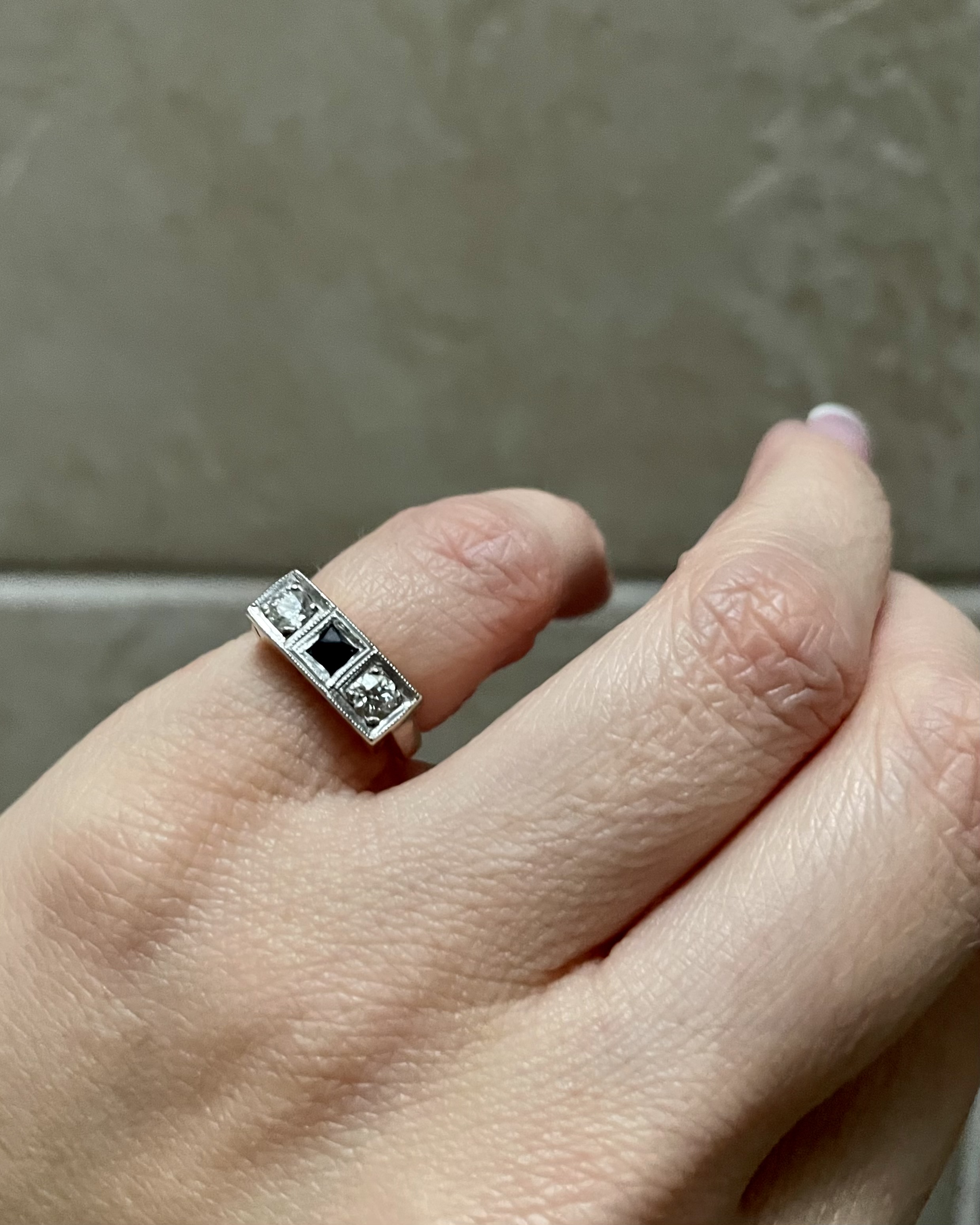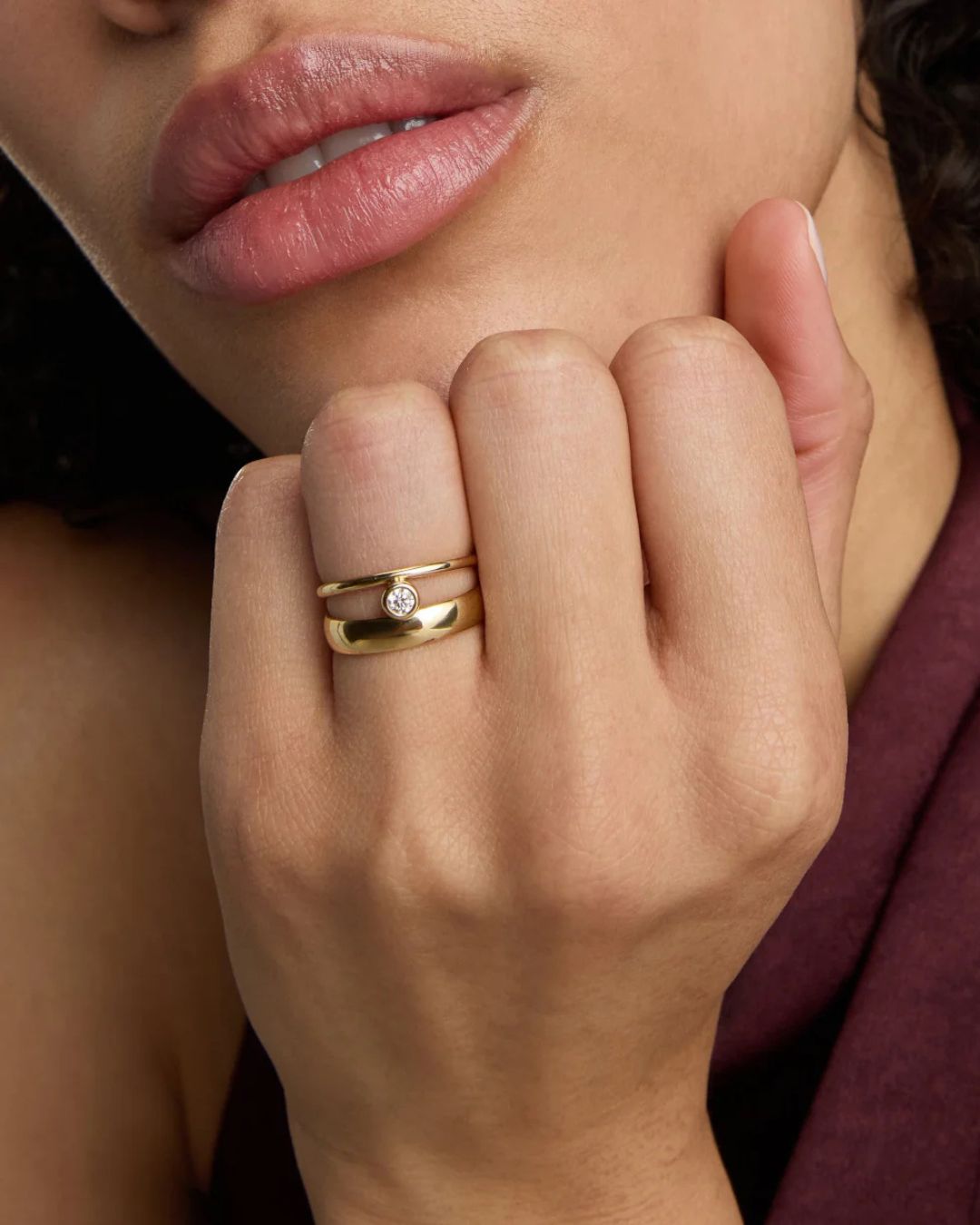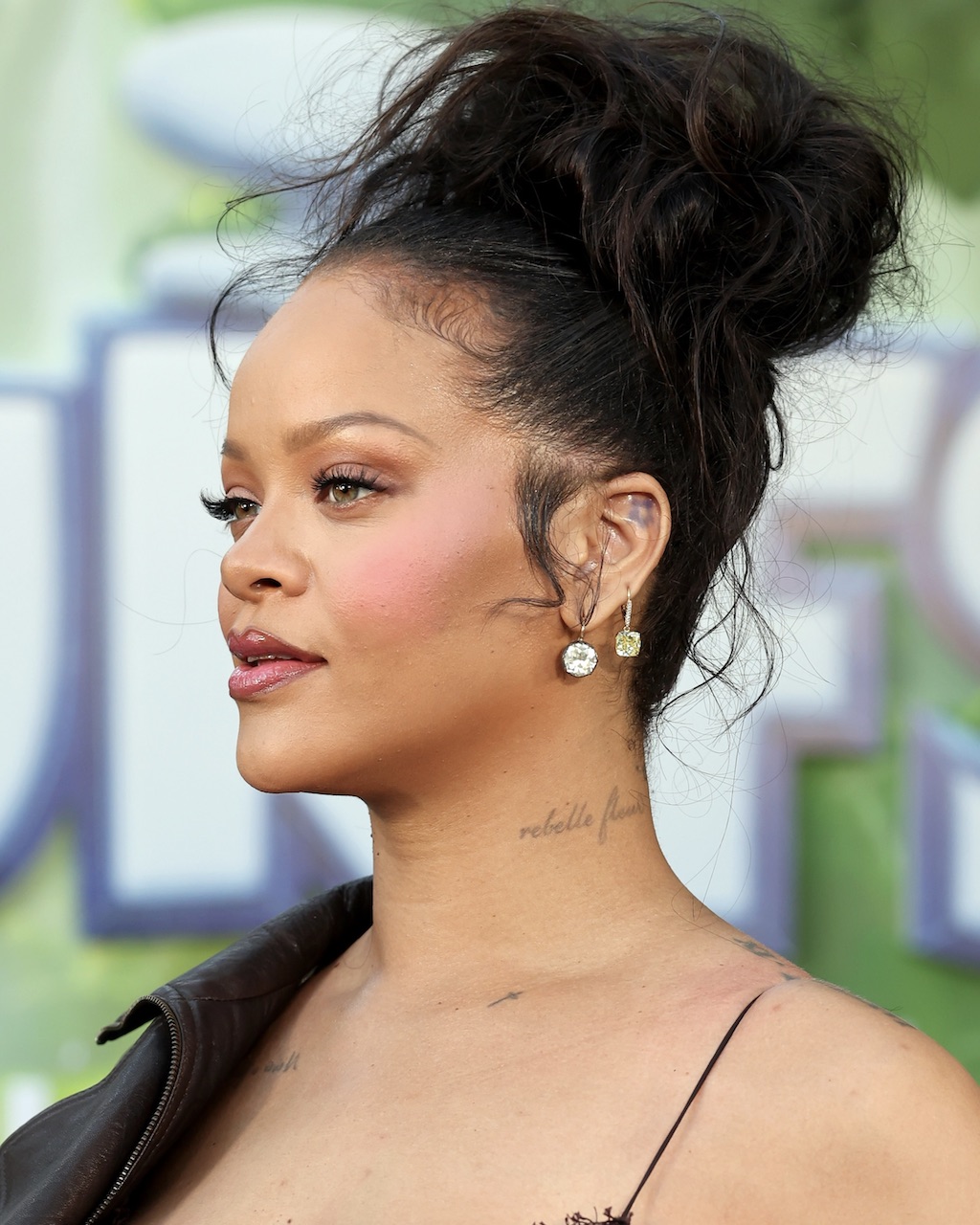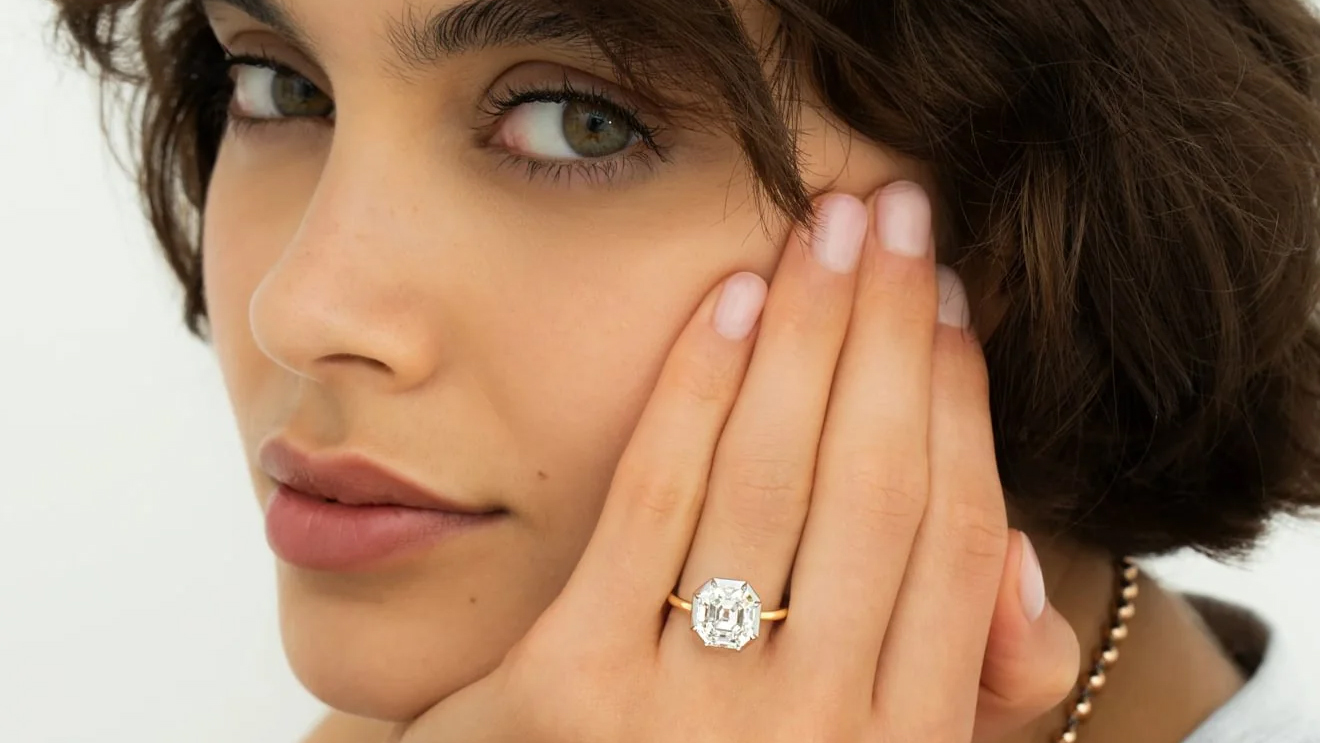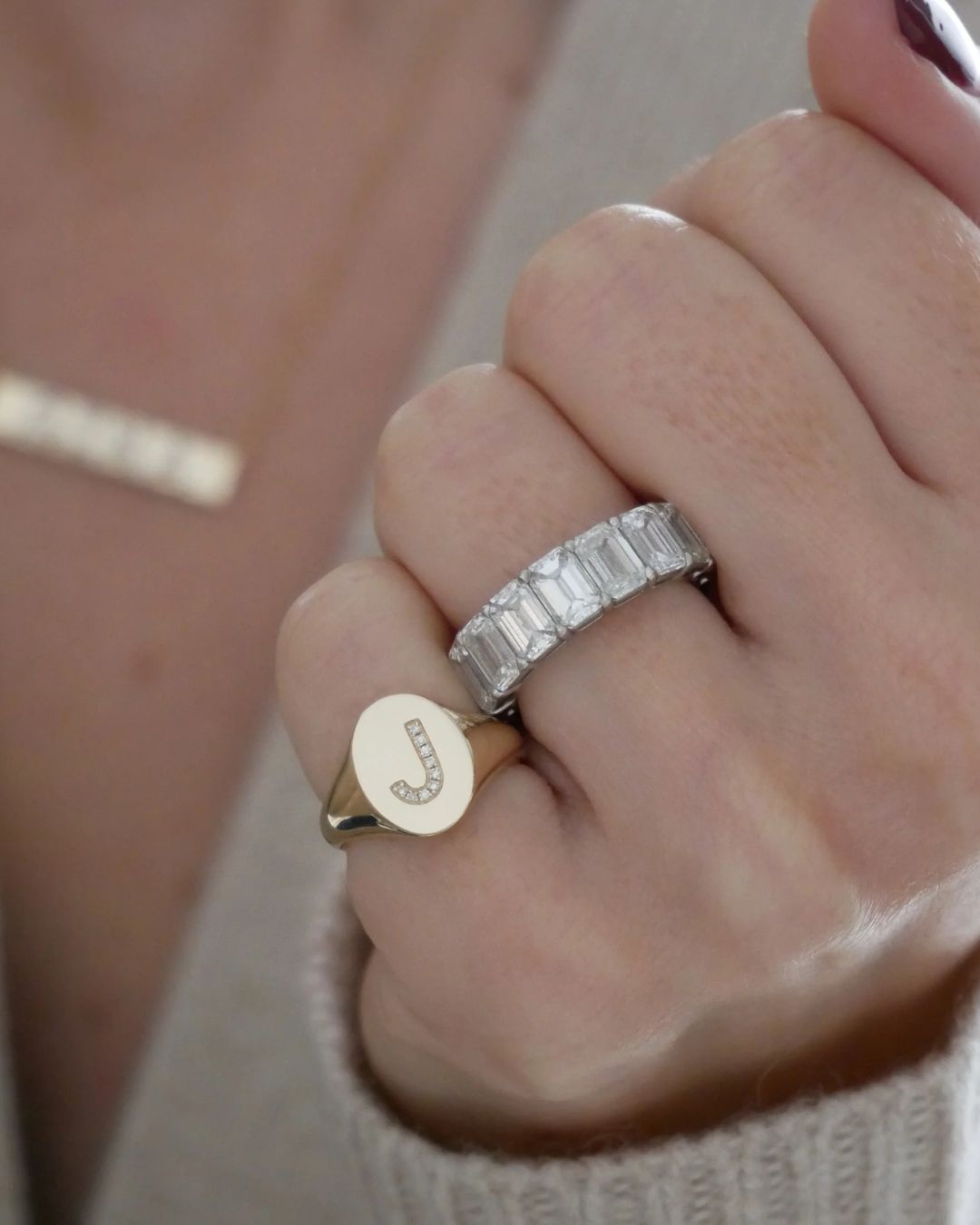< Historic Diamonds / Royal Stories
The Stunning History of the French Crown Jewels
Discover the story of the French Crown Jewels and their legendary diamonds—a rare and enduring treasure of royal heritage.
Published: October 20, 2025
Written by: Meredith Lepore
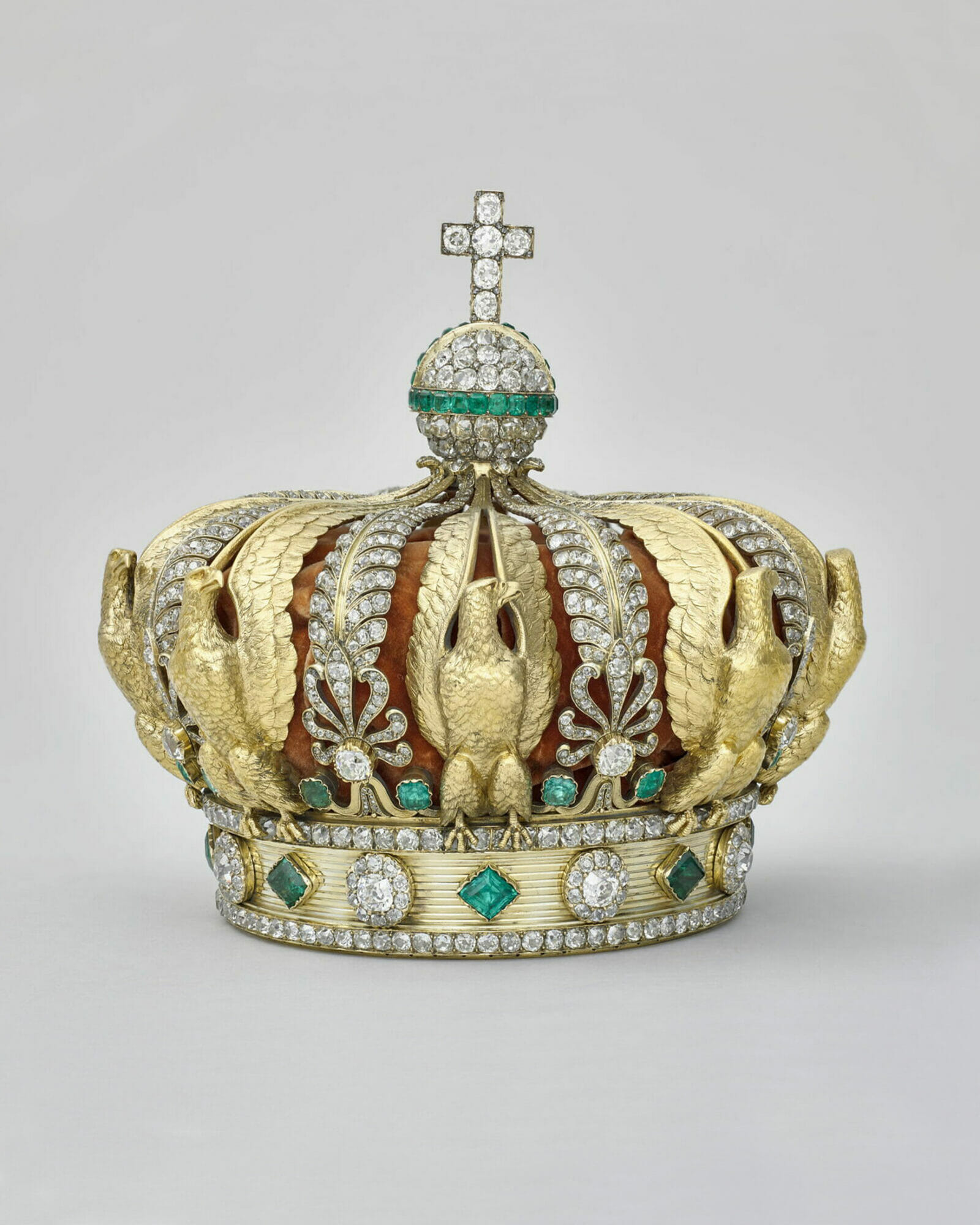
While the British and even the Danish Crown Jewels often attract more attention, the French Crown Jewels hold a singular importance as symbols of the nation’s artistry, history, and identity. Equally—if not more—glamorous than their European counterparts, they embody centuries of French craftsmanship and royal tradition, even as their story has been marked by moments of scandal and political upheaval.
The collection has almost taken on a mythical status, as they didn’t just signify luxury when they first originated, but were true symbols of the French monarchy. These extensive necklaces, crowns, earrings, and other items were the prestige and grandeur of French royalty in diamond form.
Today, the French Crown Jewels have taken another dramatic turn. On October 18, 2025, many pieces of the French Crown Jewels were brazenly stolen by thieves from the Galerie d’Apollon (Gallery of Apollo) at the Louvre Museum, where they have been housed for decades. The culprits broke in through a balcony and seized pieces adorned with thousands of diamonds, each considered a priceless treasure.
Ahead, explore the history of the French Crown Jewels—a legacy of opulence, power, and intrigue that reflects not only royal splendor but also the enduring heritage and cultural pride of France.
Meet the Expert

- Ruth Peltason is an editor, author, and lecturer.
- She runs Bespoke Books, an editorial studio specializing in books on the cultural arts.
- She is the author of David Webb: The Quintessential American Jeweler and Living Jewels: Masterpieces from Nature; and a book on jewelry and modernism.
The Origins of the French Crown Jewels
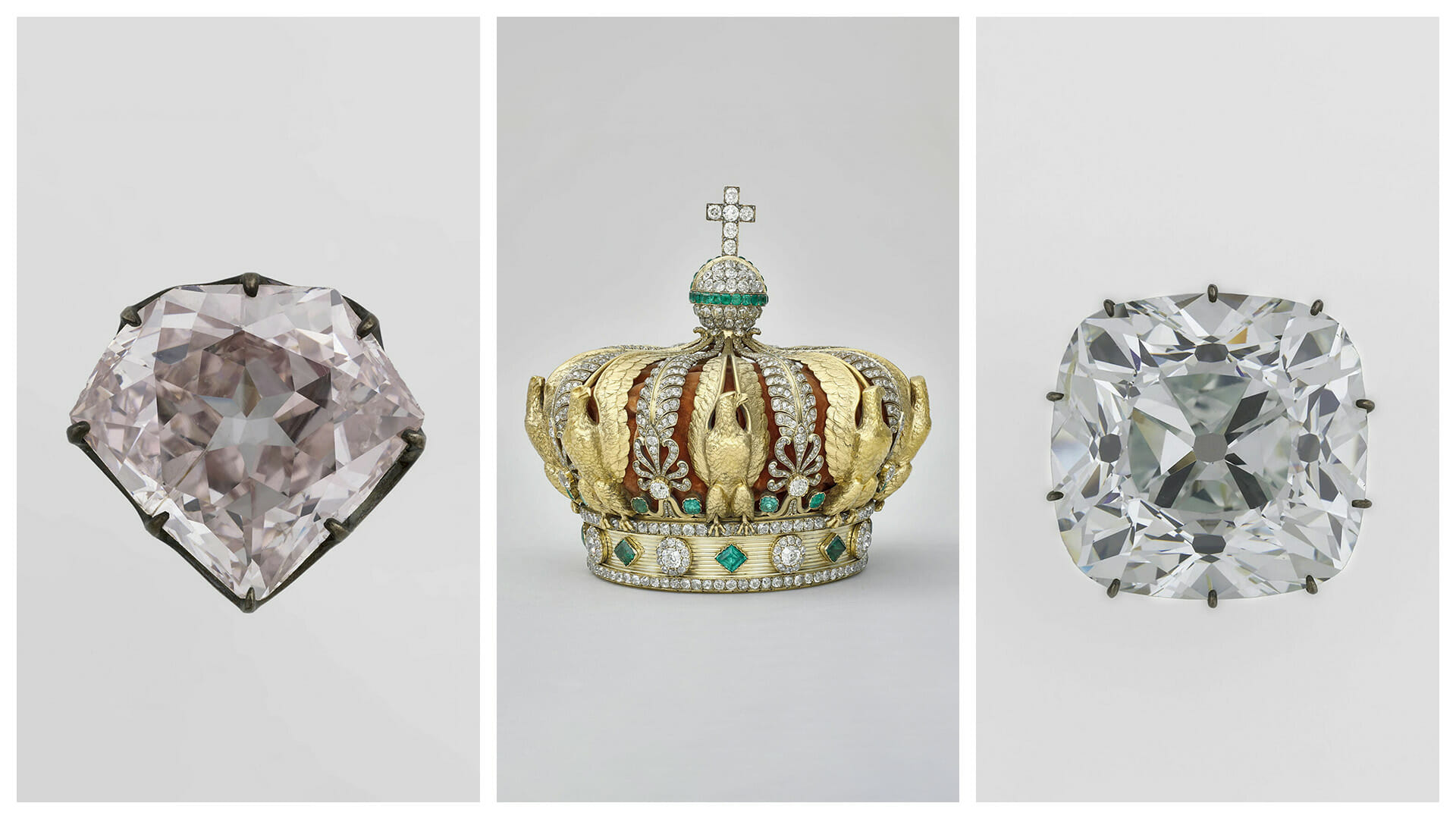
The roots of the French Crown Jewels collection date all the way back to the year 752 with the coronation of Pepin le Bref (Pepin the Short). It included scepters, orbs, and the golden Hands of Justice. New crowns were made for each king as well. Like many other European monarchies in medieval times and for centuries after, these jewels served as ceremonial regalia, embodying the authority and sacred duty of the sovereign.
A pivotal shift came in 1530, when King Francis I decreed that the jewels would no longer be considered the personal possessions of the reigning monarch but would instead belong to the French state. This decision transformed the collection into a national treasure, one that represented not just a ruler’s power, but the shared heritage and identity of France itself.
The Golden Age Under Louis XIV, the Sun King

This is when the French Crown Jewels collection truly began to flourish. In 1661, King Louis XIV acquired the Mazarin Diamonds, a remarkable group of 18 stones that included the storied Sancy Diamond. Unusual for its pale yellow hue and distinctive shield-shaped cut, the Sancy is considered one of the earliest diamonds ever faceted in a symmetrical style, an innovation that set it apart in its time. With a glamorous yet turbulent history (having been pawned, used to finance wars, and even once swallowed to keep it hidden), the Sancy added both intrigue and exceptional rarity to the royal collection.
During this time, King Louis XIV also added the Tavernier Blue, which was the precursor to the Hope Diamond, the Ruspoli Sapphire, and the pearl ‘La Pélerine’ brought with his bride, Maria Theresa, from Spain. Stunning jewelry and a wife? That’s a pretty good deal!
“Provenance has always been the so-called X factor in discussions of fine jewelry, and that significance is exponentially greater when it comes to court jewels. Add to that general point the specifics of the French Crown Jewels, including the many stories about their creation, about Louis XIV, and what they say to us about luxury, and the result is something inestimable. Simply put, these jewels are alive with history,” author and jewelry expert Ruth Peltason says.
During his reign, he enriched the French Crown Jewel collection with the addition of the 20-carat pink Hortense Diamond, a rare and captivating stone that stood out for both its size and unusual color. Pink diamonds were, and remain, among the rarest in the world, making the Hortense a singular treasure within the collection.
Marie Antoinette and the Diamond Necklace Affair
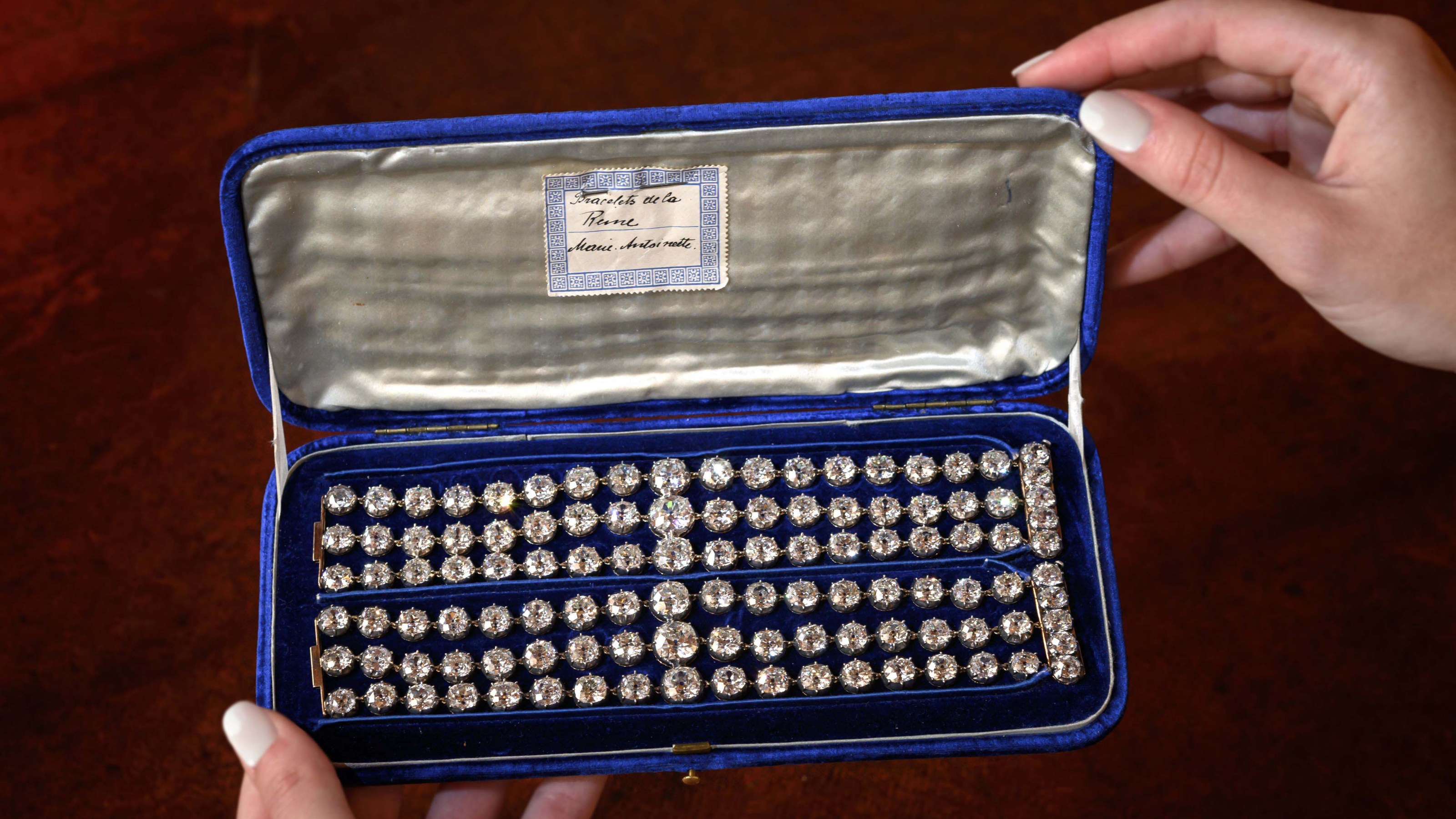
In the 18th century, Queen Marie Antoinette and King Louis XVI of France were known for their extremely opulent and often scandalous lifestyles (she was, after all, nicknamed “Madame Déficit”). Portraits from the era often depict the queen adorned in some of the most magnificent jewels of the collection, including the pink Hortense Diamond, while she also enjoyed access to the legendary Regent Diamond. Known for her love of finery, she also loved to rock a tiara.
As France stood on the brink of revolution in 1789, Queen Marie Antoinette found herself in the middle of a scandal once again, one that would further tarnish her relationship with her adopted country.
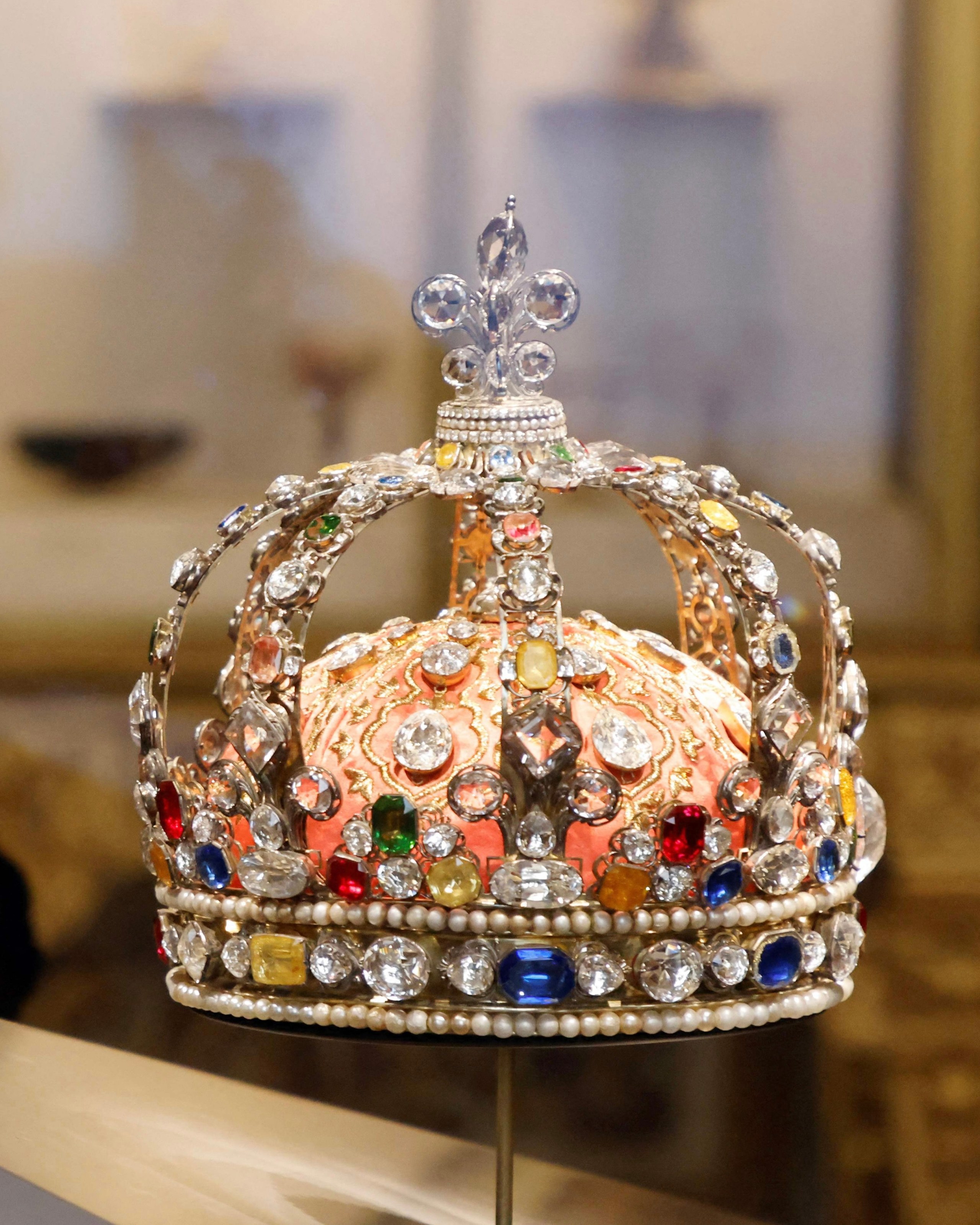
Known as the Affair of the Diamond Necklace, the scandal falsely implicated Marie Antoinette in a scheme to steal an extraordinarily valuable jewel. Though she was innocent, the controversy further damaged her public reputation, casting her passion for jewels as a symbol of royal excess in a time of unrest. Yet this moment also cemented the French Crown Jewels as more than adornments—they had become inextricably entwined with French history, culture and identity.
The Regent Diamond: France’s Most Famous Jewel
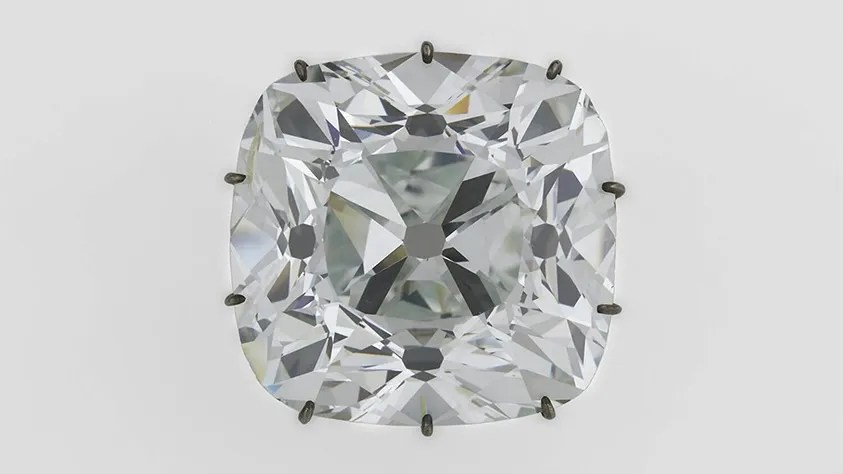
In 1717, the famed 140.64-carat cushion-cut Regent Diamond was purchased by Philippe II, Duke of Orléans, for the French Crown Jewels. Celebrated for its extraordinary clarity and brilliance, the Regent became one of the most important diamonds in the collection. It was worn by both King Louis XV and King Louis XVI at their coronations, and even found its way into one of Queen Marie Antoinette’s lavish hats (because, of course, she would).
As you can imagine, this priceless natural diamond was a coveted prize. In 1792, during the French Revolution, it was stolen along with several other Crown Jewels. Remarkably, it was later recovered and even used as collateral to fund France’s military expenses, a testament to both its immense value and its enduring role in the nation’s history.


In the very early 19th century, Napoleon Bonaparte reclaimed the diamond for France and set it into the hilt of his ceremonial sword as a symbol of power and legitimacy. The Regent Diamond went on to live many lives after that, including with Empress Eugénie, Napoleon III’s wife, who made it part of a diadem (even though, as a consort, she technically was not supposed to have access to it).
In 1887, the French Republic auctioned off many of the French Crown Jewels, but the Regent was spared and put on display at the Louvre, where it is today.
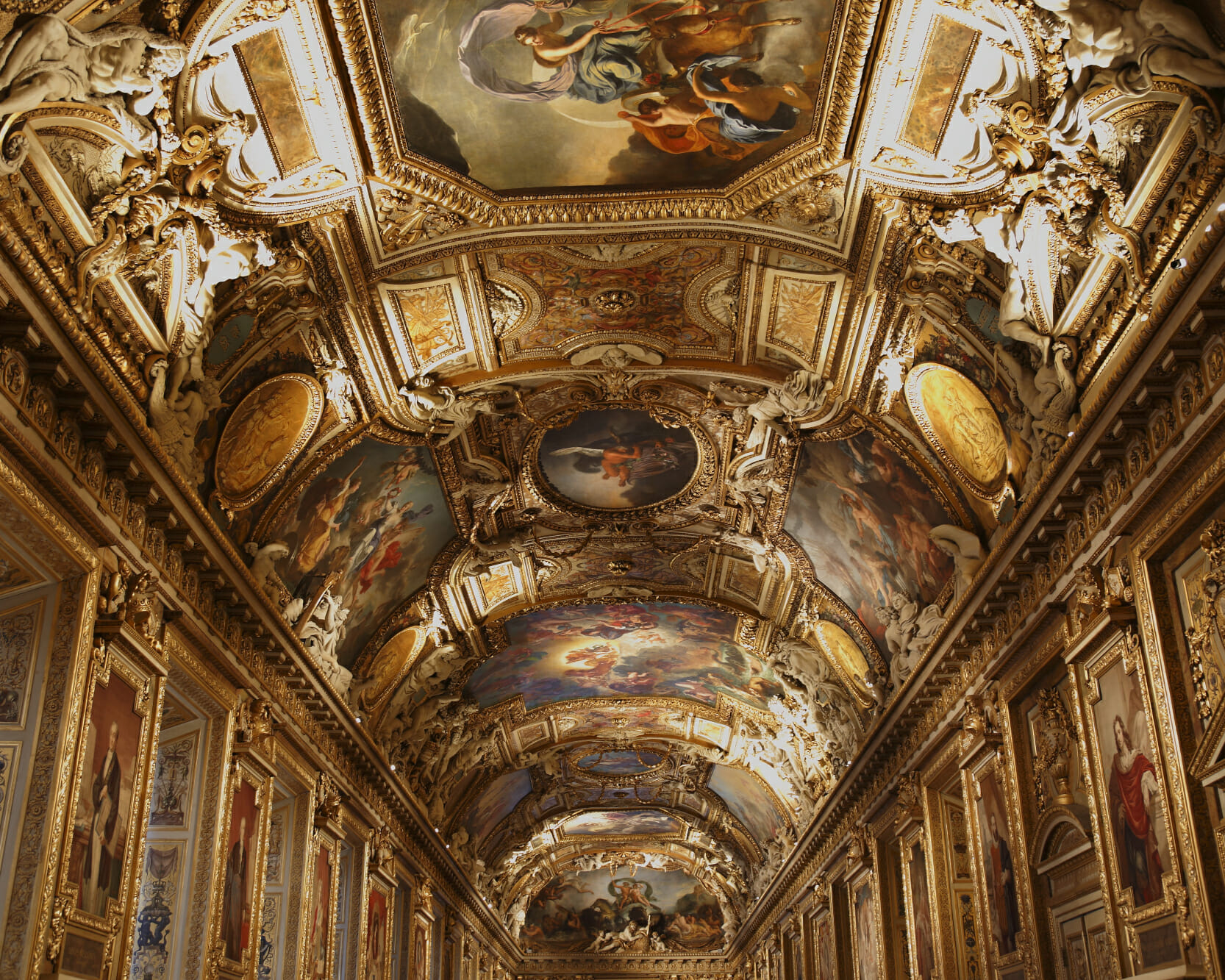
What Remains Today and Where To See the French Crown Jewels
Though the October 2025 heist was shocking, several pieces from the French Crown Jewels are still secure in the Louvre Museum, including the Regent, the Sancy and the Hortensia, and will be accessible to the public again. The hardstone vessel collection of the kings of France is also still intact at the museum.
Among the treasures stolen were a sapphire diadem, along with a necklace and single earring once worn by generations of queens; an emerald necklace and earrings set gifted by Napoleon Bonaparte to his wife, Marie-Louise of Austria; and Empress Eugénie’s diamond-encrusted brooch, composed of 94 diamonds, including the famed Diamonds 17 and 18 from the Mazarin collection. The thieves also seized a diamond bow brooch and a diadem belonging to Eugénie herself.
Eugénie’s crown, a masterpiece featuring 1,354 diamonds and 56 emeralds, was found outside the Louvre and was damaged.
“The French are the undisputed leaders of luxury, especially when it comes to jewelry. Consider that the oldest houses are French, and that they remain vital and important. Look at Mellerio—1613, Chaumet—1780, Boucheron—1858, Cartier—1895, they are all still active, and they have long defined our understanding and appreciation of fine jewelry,” says Peltason.
The hope remains that every stolen piece will one day be recovered and returned to the Louvre, as they are not only priceless works of art but also irreplaceable links to France’s royal legacy and cultural heritage
